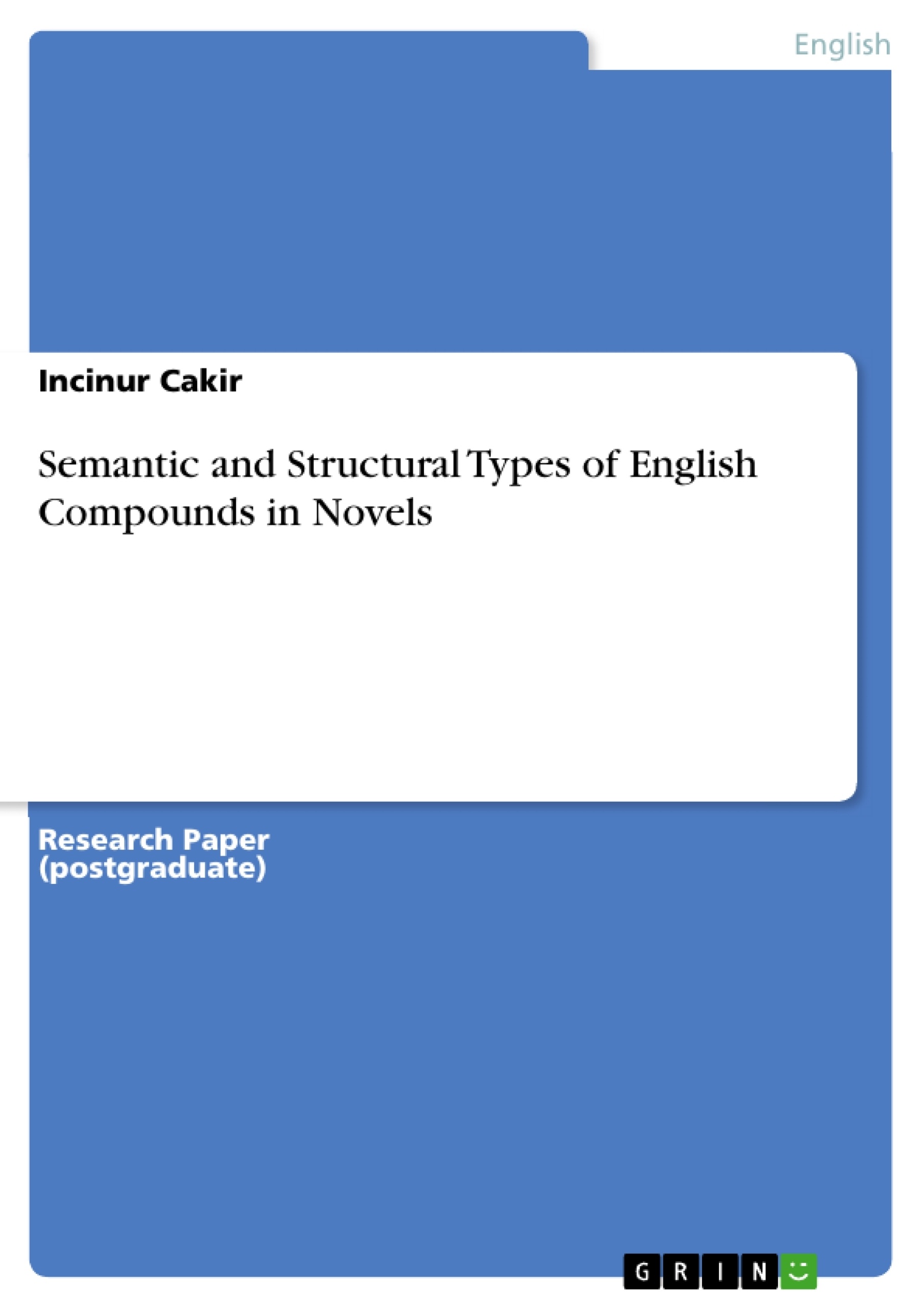Compounding is regarded as the most productive word-formation process in English. Numerous aspects of compounds have been examined so far – and surely the examinations will continue, as a high production in the formation of new words provides a wide range of data analysis and eventually new findings in the field of linguistics.
The following report is based on a research project investigating the subject of English compounds with a special focus on their semantic and structural types in novels. Some leading research questions will investigate whether any semantic and structural types are more prominent than other ones, what kind of different spellings occur and to which word-class the majority of compounds belongs.
The report begins with the theoretical background and the methodology including some important facts about the used data, the data-collection and the procedure of the analysis. Then, the results will be presented, and at the end the main findings will be summed up.
Table of Contents
Introduction
Theoretical Background
Methodology
Results for Novels
Conclusion
References
- Quote paper
- Incinur Cakir (Author), 2016, Semantic and Structural Types of English Compounds in Novels, Munich, GRIN Verlag, https://www.grin.com/document/382675
-

-

-

-
Upload your own papers! Earn money and win an iPhone X. -

-
Upload your own papers! Earn money and win an iPhone X. -

-
Upload your own papers! Earn money and win an iPhone X. -

-
Upload your own papers! Earn money and win an iPhone X. -

-
Upload your own papers! Earn money and win an iPhone X. -

-
Upload your own papers! Earn money and win an iPhone X.

